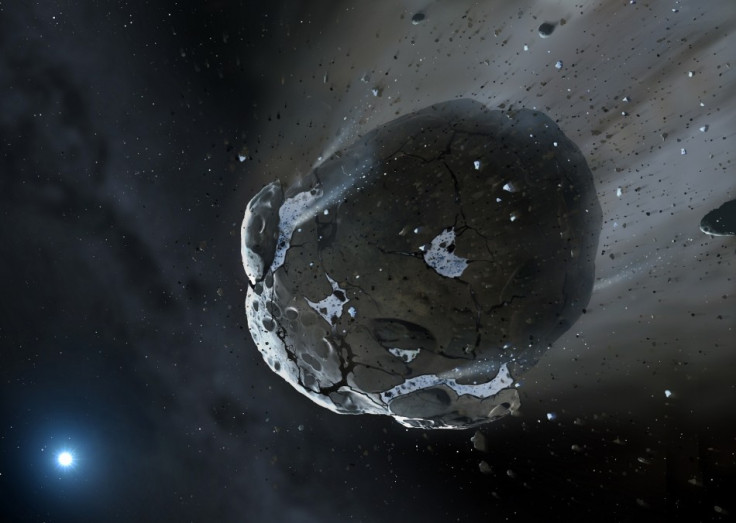Water Found on Asteroid Offers Glimpse into Future

Astronomers have for the first time discovered water on a celestial object outside our solar system, which they say could have provided life to the planets in the system.
Large amounts of water have been found on the shattered remains of an asteroid orbiting the white dwarf star GD 61.
Researchers believe the presence of water suggests the star's planetary system, around 150 light years from Earth, once had Earth-like exoplanets.
Scientists at the Universities of Warwick and Cambridge found the asteroid is comprised of 26% water mass and say this is the first "reliable evidence" of watery, rocky planetary material in any extrasolar planetary system.
Published in the journal Science, they say this is the first time both water and a rocky surface - key ingredients for habitable planets - have been found together outside our solar system.
On Earth, water arrived after the planet had formed when water-rich asteroids smashed into it.
Researchers believe the same "delivery system" could have led to habitable planets in this solar system and describe the find as a "look into our future", as six billion years from now aliens may come to the same conclusion about our solar system.
Lead author Jay Farihi, from the Institute of Astronomy at Cambridge University, said: "These water-rich building blocks, and the terrestrial planets they build, may in fact be common - a system cannot create things as big as asteroids and avoid building planets, and GD 61 had the ingredients to deliver lots of water to their surfaces.
"Our results demonstrate that there was definitely potential for habitable planets in this exoplanetary system."
Habitable planets
Researchers were able to establish the presence of water on the asteroid because dying white dwarfs have an extreme gravitational pull, which means scientists can chemically analyse the debris surrounding it.
They found an abundance of elements in the atmosphere, with significantly more oxygen than elements needed to make rocks.
"This oxygen excess can be carried by either water or carbon, and in this star there is virtually no carbon - indicating there must have been substantial water," said co-author Boris Gänsicke, from the University of Warwick.
Speaking about the solar system's potential to host life, Farihi added: "The finding of water in a large asteroid means the building blocks of habitable planets existed - and maybe still exist - in the GD 61 system, and likely also around a substantial number of similar parent stars."
© Copyright IBTimes 2025. All rights reserved.






















